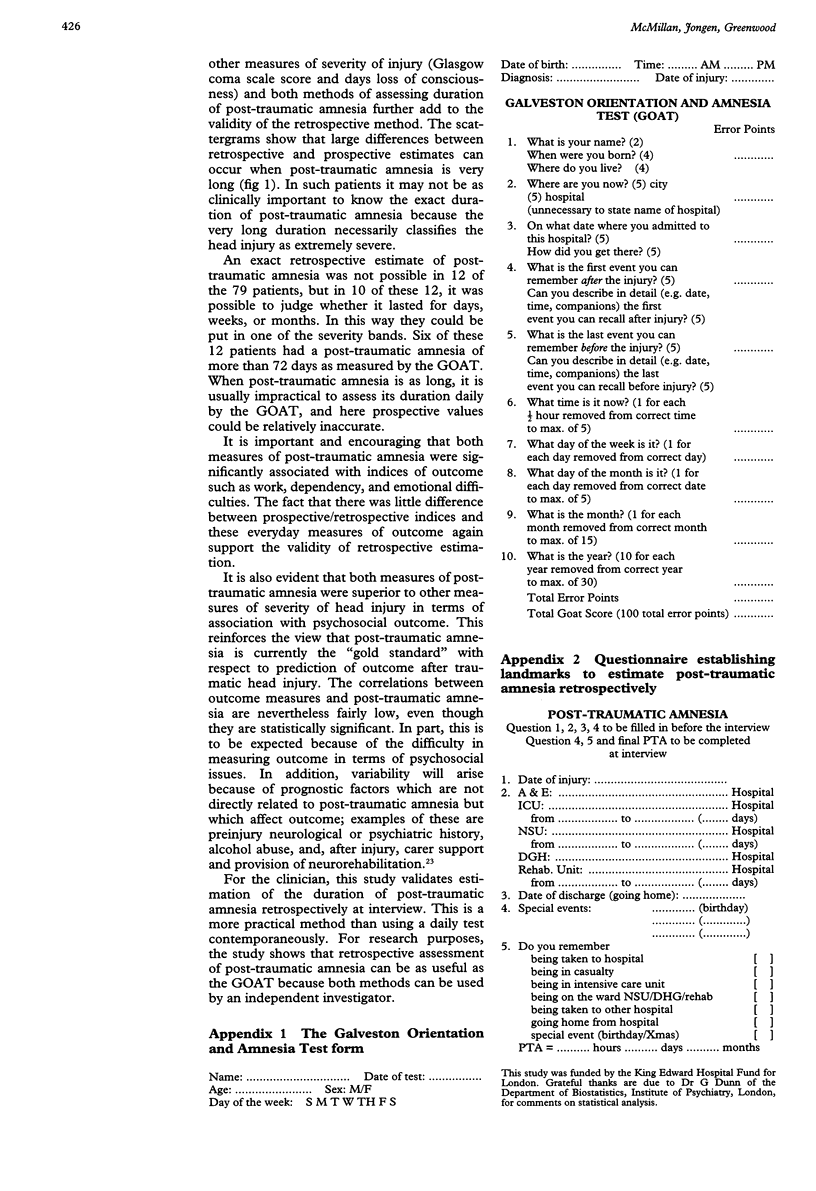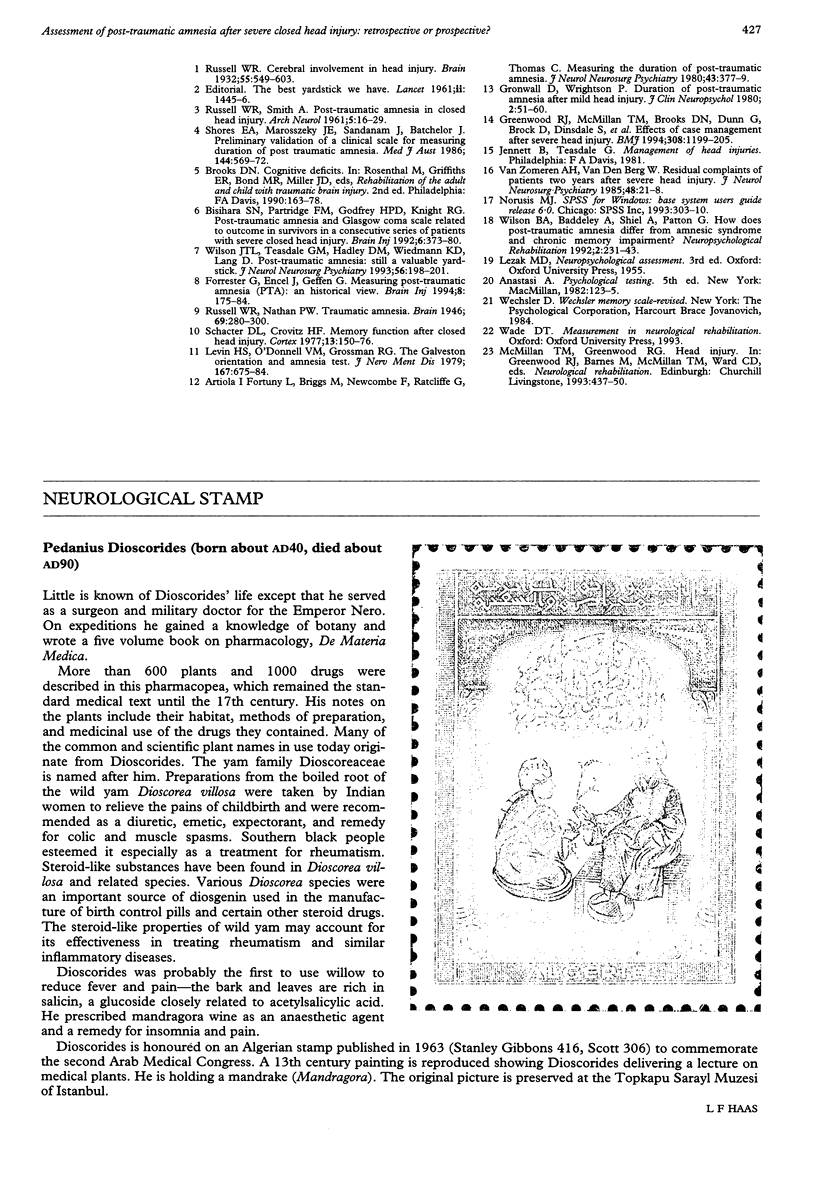Abstract
BACKGROUND: Post-traumatic amnesia is considered to be the best single indicator of the severity of closed head injury. Usually, it has been estimated retrospectively. For practical reasons this also tends to be the most common clinical method. It has been argued that prospective assessment is more accurate and reliable, but this has never been evaluated empirically in severe head injury. METHODS: Post-traumatic amnesia was initially assessed prospectively and later retrospectively by a separate observer in the same patients. RESULTS: The correlation between the two methods was high. In addition, both measures significantly correlated with other measures of severity of brain injury and with measures of outcome. CONCLUSION: Retrospective measurement of post-traumatic amnesia is a valid method.
Full text
PDF





Images in this article
Selected References
These references are in PubMed. This may not be the complete list of references from this article.
- Bishara S. N., Partridge F. M., Godfrey H. P., Knight R. G. Post-traumatic amnesia and Glasgow Coma Scale related to outcome in survivors in a consecutive series of patients with severe closed-head injury. Brain Inj. 1992 Jul-Aug;6(4):373–380. doi: 10.3109/02699059209034952. [DOI] [PubMed] [Google Scholar]
- Forrester G., Encel J., Geffen G. Measuring post-traumatic amnesia (PTA): an historical review. Brain Inj. 1994 Feb-Mar;8(2):175–184. doi: 10.3109/02699059409150969. [DOI] [PubMed] [Google Scholar]
- Fortuny L. A., Briggs M., Newcombe F., Ratcliff G., Thomas C. Measuring the duration of post traumatic amnesia. J Neurol Neurosurg Psychiatry. 1980 May;43(5):377–379. doi: 10.1136/jnnp.43.5.377. [DOI] [PMC free article] [PubMed] [Google Scholar]
- Greenwood R. J., McMillan T. M., Brooks D. N., Dunn G., Brock D., Dinsdale S., Murphy L. D., Price J. R. Effects of case management after severe head injury. BMJ. 1994 May 7;308(6938):1199–1205. doi: 10.1136/bmj.308.6938.1199. [DOI] [PMC free article] [PubMed] [Google Scholar]
- Levin H. S., O'Donnell V. M., Grossman R. G. The Galveston Orientation and Amnesia Test. A practical scale to assess cognition after head injury. J Nerv Ment Dis. 1979 Nov;167(11):675–684. doi: 10.1097/00005053-197911000-00004. [DOI] [PubMed] [Google Scholar]
- Schacter D. L., Crovitz H. F. Memory function after closed head injury: a review of the quantitative research. Cortex. 1977 Jun;13(2):150–176. doi: 10.1016/s0010-9452(77)80006-3. [DOI] [PubMed] [Google Scholar]
- Shores E. A., Marosszeky J. E., Sandanam J., Batchelor J. Preliminary validation of a clinical scale for measuring the duration of post-traumatic amnesia. Med J Aust. 1986 May 26;144(11):569–572. doi: 10.5694/j.1326-5377.1986.tb112311.x. [DOI] [PubMed] [Google Scholar]
- van Zomeren A. H., van den Burg W. Residual complaints of patients two years after severe head injury. J Neurol Neurosurg Psychiatry. 1985 Jan;48(1):21–28. doi: 10.1136/jnnp.48.1.21. [DOI] [PMC free article] [PubMed] [Google Scholar]



